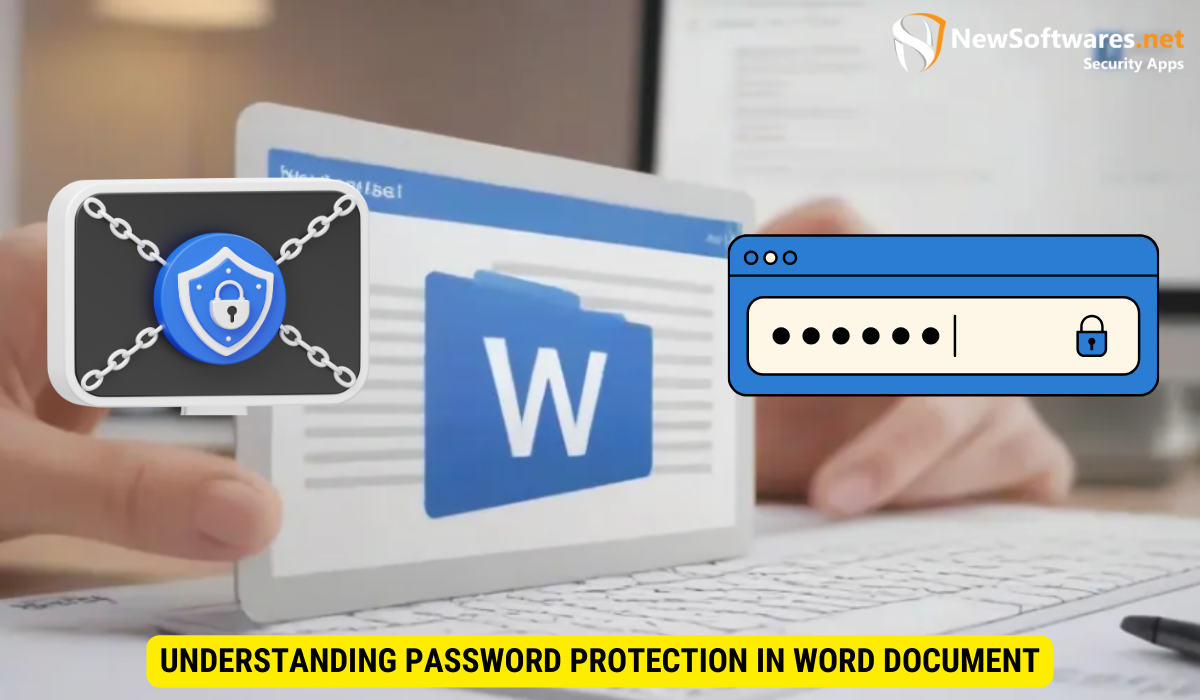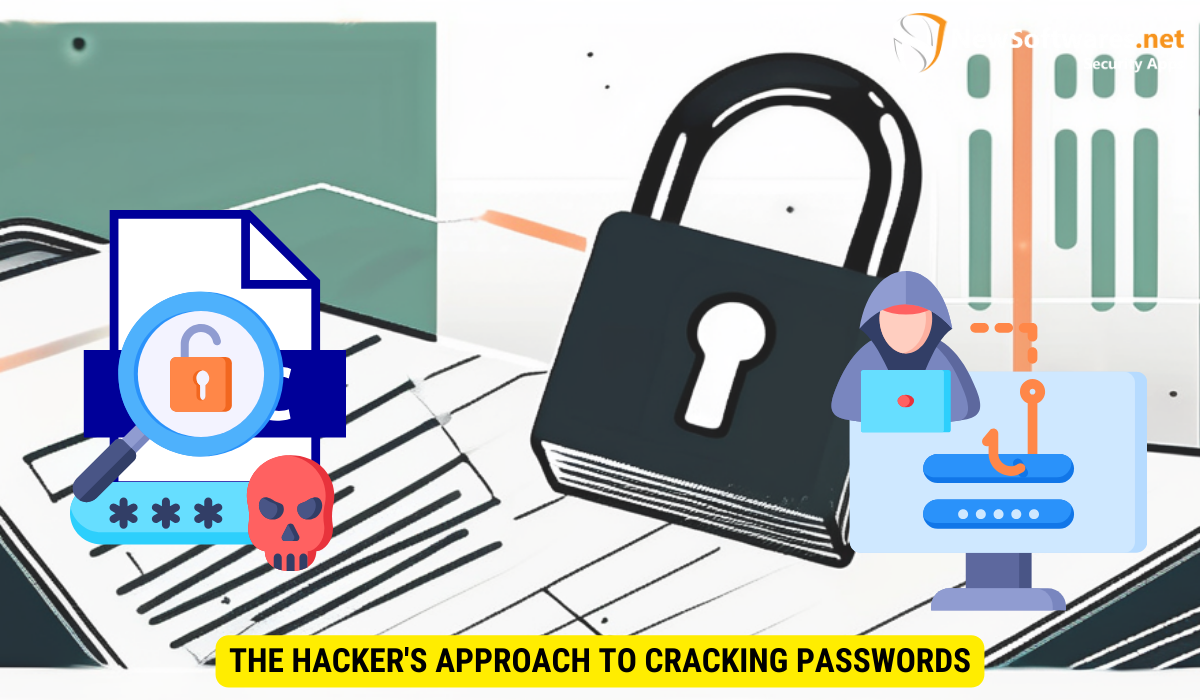Yes, hackers can potentially crack password-protected Word documents using various techniques such as brute force attacks, dictionary attacks, and social engineering. However, implementing strong passwords, regularly updating them, and using advanced security measures like encryption and two-factor authentication can significantly reduce the risk of unauthorized access.
In today’s digital age, the security of our sensitive information is paramount. We rely on passwords to protect our personal and professional data, and one common file format that often contains valuable information is the Word document. But how secure are password-protected Word documents? Can hackers crack them? I will explore the world of password protection in Word documents and delve into the methods hackers use to bypass these safeguards. Ultimately, we will uncover whether your sensitive information is truly safe.
Understanding Password Protection in MS Word Document

Before we dive into the intricacies of password protection, let’s first understand the basics. A password protects a Word document by encrypting its contents. When you set a password, it is converted into a unique string of characters that serves as the key to decrypt the document. This encryption secures your information and prevents unauthorized access.
The Basics of Password Encryption
Password encryption is a crucial aspect of protecting your Word documents. It involves converting your password into a complex string of characters using sophisticated algorithms. This conversion process ensures that even if someone gains access to the encrypted password, it is extremely difficult to decipher. The strength of the encryption algorithm used plays a significant role in the overall security of your document.
How Word Document Password Protection Works
Word document password protection works by employing two main types of passwords: “open passwords” and “modify passwords.” An open password restricts access to the document entirely, requiring anyone wanting to open the file to enter the correct password. Conversely, a modify password allows users to open the document but restricts their ability to make changes unless the modify password is entered.
Now, let’s delve deeper into the intricacies of password protection in Word documents. When you set an open password, you create a barrier that prevents unauthorized individuals from accessing the document altogether. This can be particularly useful when dealing with sensitive information that should only be viewed by specific individuals.
On the other hand, modify passwords provide an additional layer of security by allowing users to open the document but limiting their ability to make changes. This feature is especially valuable when you want to share a document with others but want to ensure that its content remains intact and unaltered.
It’s important to note that password protection in Word documents is not foolproof. While it adds an extra level of security, it is still susceptible to various hacking techniques. Therefore, it is crucial to choose a strong and unique password, combining uppercase and lowercase letters, numbers, and special characters. Additionally, it is recommended to change your password periodically to enhance the security of your documents.
In conclusion, password protection in Word documents is an essential feature that helps safeguard your sensitive information. By understanding the basics of password encryption and the different types of passwords available, you can effectively control access to your documents and ensure their integrity. Remember to choose a strong password and regularly update it to maximize the security of your Word documents.
The Hacker’s Approach to Cracking Passwords

Now that we have a better understanding of password protection in Word documents, it’s essential to explore the techniques hackers use to crack these passwords. By being aware of their methods, we can better evaluate the security of our own documents and take appropriate measures to protect them.
Common Tools and Techniques Used by Hackers
Hackers employ an array of tools and techniques to crack passwords, ranging from sophisticated software to social engineering. Software programs like password recovery software, which attempts to guess the password by systematically trying different combinations, are commonly used. Additionally, hackers often exploit vulnerabilities in password management systems to gain unauthorized access.
The Role of Brute Force Attacks
One of the most straightforward yet time-consuming methods used by hackers is known as a brute force attack. This method involves attempting every possible combination until the correct password is found. While it may seem like a labor-intensive approach, hackers can use powerful computers or botnets to automate the process, significantly increasing their chances of success.
Another technique employed by hackers is dictionary attacks. In this method, hackers use a pre-existing list of commonly used passwords, known as a dictionary, to systematically try each word until they find a match. This approach is effective because many users tend to use easily guessable passwords, such as “password” or “123456.” By leveraging the predictability of human behavior, hackers can quickly gain access to password-protected documents.
Social engineering is another powerful tool in a hacker’s arsenal. Instead of relying solely on technical methods, hackers manipulate individuals into revealing their passwords through psychological manipulation. This can involve tactics such as impersonating a trusted authority figure or creating a sense of urgency to trick unsuspecting users into divulging their login credentials. By exploiting human vulnerabilities, hackers can bypass even the most robust security measures.
Evaluating the Strength of Your Password
Now that we’re aware of the techniques hackers employ, it’s crucial to evaluate the strength of our passwords to ensure maximum security. A strong password is essential for safeguarding your Word documents and preventing unauthorized access.
Factors that Determine Password Strength
The strength of a password depends on several factors, including its length, complexity, and uniqueness. Using a combination of uppercase and lowercase letters, numbers, and special characters significantly enhances password strength. Additionally, avoiding commonly used passwords or personal information makes your password more secure.
The Importance of Regular Password Updates
While creating a strong password is important, it’s equally crucial to update it regularly. Regularly changing your passwords reduces the risk of them being compromised, especially if you suspect a breach or if others may have had access to your sensitive information.
Advanced Security Measures for Word Documents
In addition to creating strong passwords and regularly updating them, there are advanced security measures you can employ to enhance the protection of your Word documents.
Using Two-Factor Authentication
Two-factor authentication adds an extra layer of security by requiring users to provide two forms of identification to access a document. This could include something they know, such as a password, and something they have, such as a verification code sent to their mobile device. By implementing this additional step, you significantly reduce the chances of unauthorized access.
Encrypting Word Documents for Extra Security
Another way to strengthen the security of your Word documents is by encrypting them. Encryption is the process of converting the contents of a document into an unreadable format, which can only be deciphered with the correct decryption key. This ensures that even if a hacker bypasses the password protection, the document’s contents remain secure.
The Future of Password Protection
As technology continues to evolve, so does the field of password protection. Innovations in cybersecurity have the potential to change the way we secure our sensitive information.
Emerging Trends in Cybersecurity
Advancements in artificial intelligence and machine learning are revolutionizing cybersecurity. These technologies have the potential to identify patterns, detect anomalies, and enhance the overall security of our digital systems. As they become more sophisticated, we can expect to see more robust password protection measures.
How AI and Machine Learning are Changing Password Protection
AI and machine learning can play a significant role in password protection by analyzing user behavior, detecting potential threats, and identifying patterns that may indicate unauthorized access attempts. By leveraging these technologies, we can proactively protect our information and stay one step ahead of hackers.
Key Takeaways
- Password protection in Word documents encrypts the content, making it difficult for hackers to access.
- Hackers use various tools and techniques, including brute force attacks, to crack passwords.
- Creating strong passwords and regularly updating them enhances the security of Word documents.
- Advanced security measures, such as two-factor authentication and encryption, provide additional layers of protection.
- Emerging technologies like AI and machine learning have the potential to enhance password protection in the future.
FAQs
1. Can hackers crack password-protected Word documents?
While it is possible for hackers to crack password-protected Word documents, implementing strong passwords and employing advanced security measures can significantly reduce the risk.
2. What factors determine password strength?
Password strength depends on factors such as length, complexity, and uniqueness. Using a combination of letters, numbers, and special characters enhances password strength.
3. How often should I update my passwords?
Regularly updating your passwords, especially in situations where a breach may have occurred or if others may have had access to your information, is recommended for maximum security.
4. What is two-factor authentication?
Two-factor authentication requires users to provide two forms of identification, such as a password and a verification code sent to their mobile device, to access a document or system.
5. How can encryption enhance password protection?
Encryption converts the contents of a document into an unreadable format, ensuring that even if hackers bypass the password protection, the document remains secure.
Conclusion
In conclusion, password protection in Word documents provides a level of security for our sensitive information. While no system is entirely foolproof, by understanding the techniques hackers use and implementing strong password management practices, we can significantly reduce the risk of unauthorized access. Furthermore, as technology continues to advance, we can expect even more robust password protection measures to enhance the security of our digital documents.
